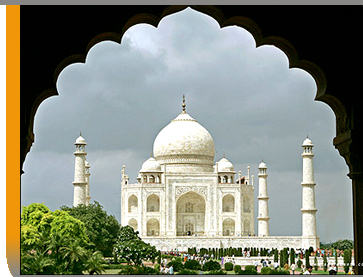|
|
Taj Mahal Myths
The architect of the Taj Mahal aimed at giving maximum strength and stability to the tomb and worked out the minutest details with utmost precision : the weight of the entire structure is uniformly distributed, extraordinarily massive piers and vaults were constructed to support this heavy load., the very best quality of bonding material helped combat the disrupted tensile stress etc. However, in spite of all these precautions and care, dangerous cracks and leakages developed in the substructure just four years after its completion. Aurangzeb in his letter to Shah Jehan in 1652 mentions these cracks. Some defects ere discovered about the same time in the dome. Though thorough repairs were undertaken, the nature of the cracks was not discovered. The cracks were again noticed to have developed to dangerous proportions in 1810. As a result an Advisory Committee on the restoration and conservation of the monument was set up and a survey with reference to the damage was undertaken.
Some very important facts resulted from this survey. It was discovered that the plinth of the mausoleum on the northern side (or the riverside) is lower than on the south by 3.5cms. Cracks were not noticed on the exterior wall, but they were definitely present on the second storey vaults of the marble structure and, on a much larger scale, in the underground vaults below the northern side. The long series of cracks in the underground vaults may be due to the crushing of lime on account of the excessive weight, or as seems more probable, this may be due to the sinking of the whole structure towards the riverside!! Such a sinking would shift the load out of balance slowly and gradually and the unequal settlement would crack the weak points, particularly the soffits of the vaults and arches, which is actually happening in the underground chambers.
A structure which stands on the edge of water has a natural tendency to move towards the more open side, the higher edge always acting as a strong buttress, thrusting it in the opposite direction. It is the whole mass, and not a part of it, that is gradually sinking. This is what can justifiably be concluded from the available data.
|

